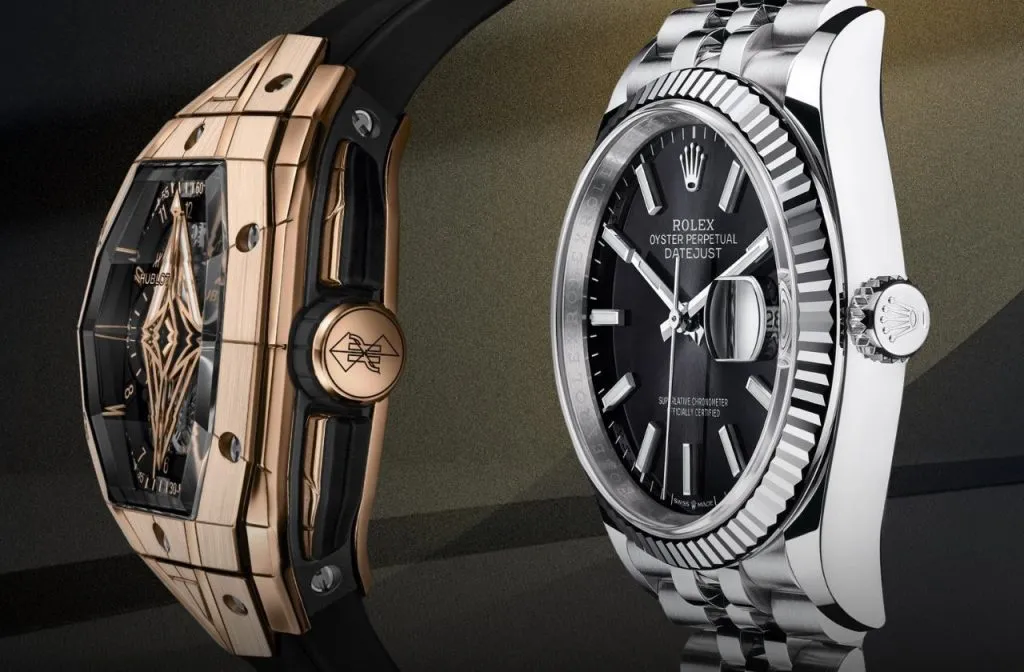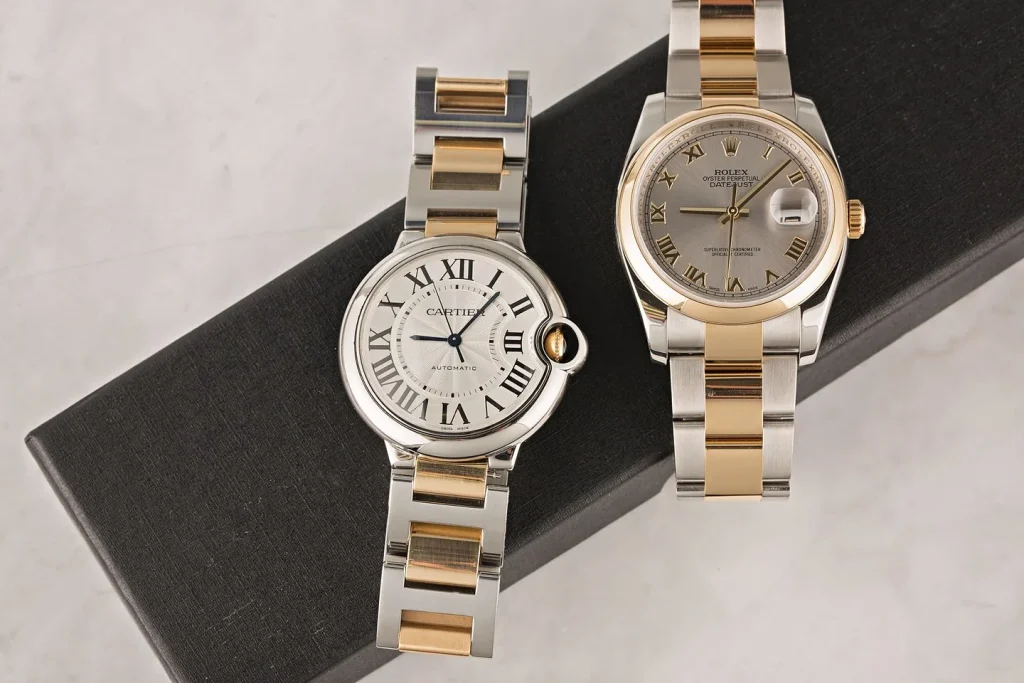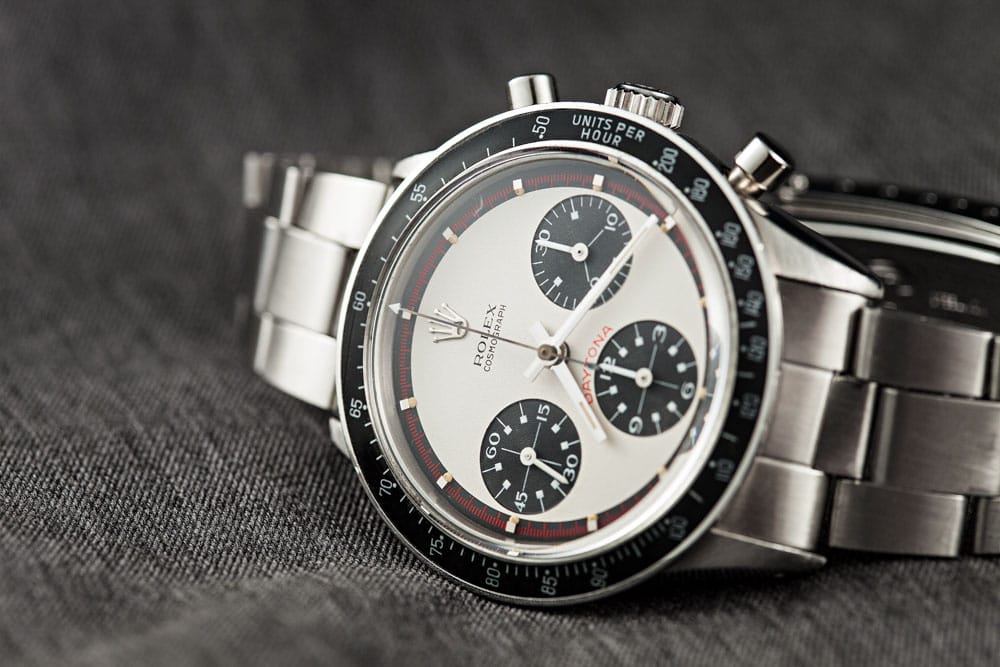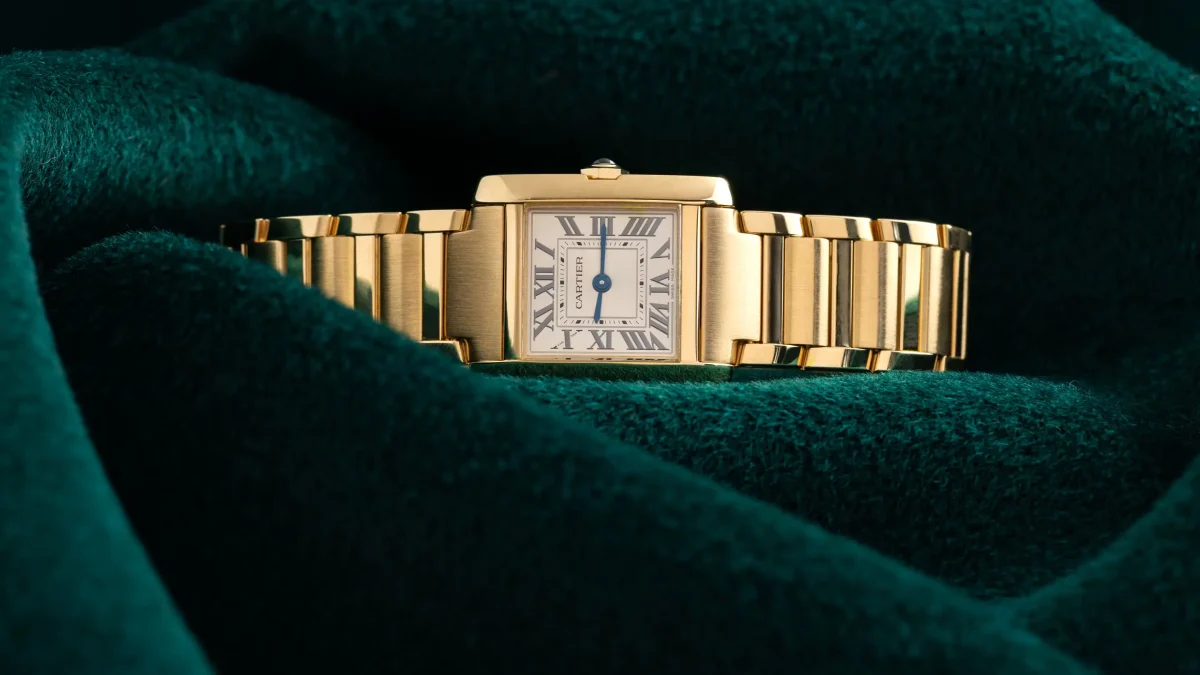Ever wonder why a Cartier Tank feels so different from a Rolex Submariner on your wrist? It’s not just the shape or the price tag — it’s two completely different philosophies clashing in the most beautiful way possible.
We’re talking about the eternal showdown between jewelry elegance and tool watch precision. One brand born from Parisian salons, the other forged in Swiss workshops with one obsession: making watches that work when everything else fails.
The Tale of Two Origins
Let’s rewind to 1847. Louis-François Cartier took over a tiny jewelry workshop in Paris. His dream? Creating pieces so stunning they’d make royalty weep. Fast forward to 1905, and Hans Wilsdorf had a very different vision in London — he wanted to prove that wristwatches could be as accurate as marine chronometers.

Different DNA from day one.
Cartier’s roots run deep in the world of high jewelry. By 1859, they were crafting pieces for Napoleon III’s cousin. King Edward VII famously called them “the jeweller of kings and the king of jewellers”. When they ventured into watchmaking in 1904 with the Santos, it was because aviator Alberto Santos-Dumont complained about the impracticality of pocket watches while flying.
Rolex? They were solving a different problem entirely. Wilsdorf was obsessed with precision and reliability. In 1910, Rolex earned the world’s first chronometer certificate for a wristwatch. By 1926, they’d invented the waterproof Oyster case. Mercedes Gleitze wore one swimming the English Channel — it emerged in perfect working order.
Two brands. Two missions. One focused on beauty that takes your breath away. The other on performance that saves your life.
Design Philosophy: Art Meets Engineering
Walk into any watch boutique and you’ll spot the difference immediately.
Cartier watches whisper elegance. Roman numerals. Blue steel hands that catch the light just so. Sapphire cabochon crowns. The Tank’s clean lines inspired by WWI Renault tanks. The Santos with its distinctive exposed screws. Every detail serves beauty first, function second.

Cartier’s design language comes straight from their jewelry heritage. They’re masters of non-traditional shapes — rectangular Tanks, square Santos models, tonneau-shaped Crash watches. Louis Cartier pioneered using platinum in jewelry back in the early 1900s, creating nearly invisible settings that put diamonds front and center.
Rolex watches? They speak function.
Every curve, every surface serves a purpose. The Submariner’s rotating bezel helps divers track elapsed time underwater. The GMT-Master’s second timezone hand assists pilots crossing time zones. The Explorer’s simple, legible dial ensures readability in extreme conditions.
Rolex’s aesthetic is what designers call “form follows function.” No unnecessary decoration. No delicate details that might break under pressure. Just clean, masculine lines that radiate understated confidence.
Which approach wins? Depends on your personality, honestly.
Materials: Precious vs. Proprietary
Here’s where things get really interesting. Both brands use premium materials, but for completely different reasons.
Cartier leans into luxury. High-polish precious metals. Gem settings that would make Tiffany jealous. Their jewelry background shows in every bracelet link, every case finishing. When they use steel, it’s often accented with gold because — why wouldn’t you?
Rolex creates their own everything.
Oystersteel? That’s their proprietary 904L stainless steel, the same grade used in aerospace and chemical industries. Cerachrom ceramic bezels? Virtually scratchproof and fade-resistant. Everose gold? Their own rose gold alloy that won’t lose its color.
Rolex literally owns foundries where they cast their own metals. They control every step of production. It’s vertical integration taken to an almost obsessive level.
The result? Cartier pieces feel like jewelry that happens to tell time. Rolex watches feel like precision instruments wrapped in luxury.

Movement Philosophy: Tradition vs. Innovation
Movement-wise, these brands couldn’t be more different.
Cartier’s approach reflects their heritage. For decades, they sourced movements from prestigious Swiss suppliers like Jaeger-LeCoultre and Piaget. Their first truly in-house movement didn’t arrive until 2009 with the 1904MC caliber. Even today, many Cartier watches use decorated ETA movements or calibers from sister Richemont brands.
But here’s the thing — that’s not necessarily bad. ETA has been making movements since 1793. They know what they’re doing. Cartier’s focus has always been on design and finishing rather than movement manufacturing.
Rolex went full control-freak mode. Every modern Rolex uses an in-house, COSC-certified movement. Their Superlative Chronometer standard is twice as strict as industry norms — accuracy within -2/+2 seconds per day.
They spent decades perfecting their movements. The result? Legendary reliability that makes Rolex the first choice for professional divers, pilots, and explorers.
Iconic Models: Style Icons vs. Tool Legends
Cartier Tank vs. Rolex Explorer
The Tank debuted in 1917, inspired by military tank tracks. Clean rectangular lines. Roman numerals. Blue hands. It’s been on the wrists of everyone from Jackie Kennedy to Princess Diana. The Tank represents timeless elegance — it looks as fresh today as it did a century ago.
The Explorer launched in 1953 following the first Everest ascent. Simple. Robust. Legible. It’s the ultimate “If You Know, You Know” Rolex. No complications. No flash. Just reliable timekeeping in extreme conditions.
Cartier Santos vs. Rolex Submariner
The Santos (1904) was the world’s first men’s wristwatch designed for aviation. Square case. Exposed screws. Leather strap with deployment clasp — revolutionary for its time. Today’s Santos features QuickSwitch strap technology and modern manufacturing, but the DNA remains unchanged.
The Submariner (1953) defined dive watches forever. Unidirectional rotating bezel. Luminous markers for underwater legibility. Water-resistant to 300 meters. It became James Bond’s watch of choice and never looked back.
Different tools. Different purposes. Same legendary status.

Target Audience: Creatives vs. Achievers
Who buys Cartier? Style-conscious individuals who appreciate artistry. Creative professionals. Fashion enthusiasts. People who want their watch to be a conversation starter about design and heritage rather than specifications.
Cartier appeals to buyers who see watches as jewelry first, timekeeping tools second. Their advertising focuses on elegance, craftsmanship, and emotional connection.
Rolex customers? Professionals, collectors, and anyone who views their watch as a status symbol and investment. Doctors, lawyers, successful entrepreneurs. People who appreciate technical excellence and want universal recognition.
Rolex markets to achievers. Their message is clear: wear a Rolex, and the world knows you’ve made it.
Investment Appeal: Emotional vs. Financial Returns
Let’s talk numbers. Rolex absolutely dominates the resale market.
Current market data shows Rolex holding 32% of the entire Swiss luxury watch market with 1.176 million units sold in 2024. On the secondary market, they command 34.2% of transaction volume globally. Popular models like the Submariner retain 90%+ of their value after five years.
Some Daytonas sell for 2-3x retail price due to scarcity. Vintage “Paul Newman” Daytonas have reached auction prices of $17.8 million.

Cartier’s investment story is more nuanced. They hold 8% market share with around 680,000 units sold annually. Most models retain 60-70% of their value, which isn’t bad for luxury goods. Certain pieces like the Crash appreciate 15-20% annually due to limited supply.
But here’s the thing — Cartier buyers often care less about ROI. They’re buying emotional satisfaction, artistic expression, and heritage. The watch holds sentimental value that transcends pure financial returns.
The Verdict: Choose Your Philosophy
So, Cartier or Rolex?
Choose Cartier if you:
- Value artistic design over technical specs
- Want a conversation piece that reflects your style
- Appreciate jewelry-grade craftsmanship
- Don’t mind a more accessible entry price ($3,000 vs. $6,500)
- View watches as personal expression first
Choose Rolex if you:
- Prioritize investment potential and resale value
- Want universal recognition and status
- Need legendary reliability and precision
- Appreciate technical innovation
- View your watch as both timepiece and asset
The truth? Both represent the pinnacle of luxury watchmaking. Just from completely different angles.
Cartier proves that watches can be art. Rolex proves that tools can be luxury. In the end, your choice reveals more about your personality than your bank account.
Which philosophy speaks to you?
